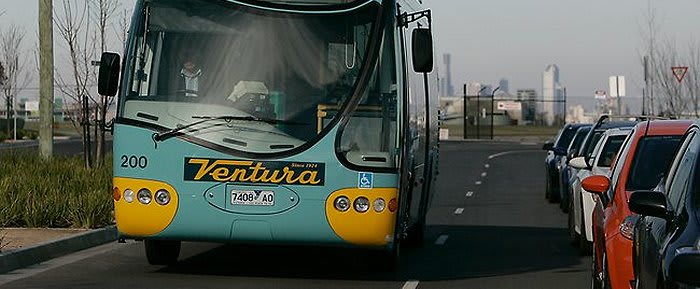Alastair TaylorDecember 1, 2013
The SOEV 2013 report quotes Sir Rod Eddington's observation of the 'Pursuit of "iconic" projects at the expense of small projects' as not being optimal and in section 4.3.5.1 on
page 453, the report goes on to explain cheaper and more effective public transport options can be brought to those who currently have access to mediocre levels of public transport by ramping up investment in bus services.
Notwithstanding the broad nature of the report, to have such a specific recommendation aiding sustainable communities via significant bus investment is telling. The Public Transport debate tends to revolve around the big ticket items:
Melbourne Metro, the entire PTV Heavy Rail plan with buses and trams seemingly put to the wayside.
The above graphic can be found on page 443 of the report and provides a brilliant rundown on the costs of implementation, the time to start services and potential ridership of different modes of Public Transport.
If there is one thing that could be looked upon as a great positive from the past 50 years of auto-centric suburban expansion in
Melbourne. it's the scale and capacity of the road network which has over time come along with it. Wide medians, wide lanes and wide corridors - think
Springvale Road, Cheltenham Road and Stud Road in the East for example - are all prime examples where prior State Governments have begun to see the potential in investing in better bus services via the Smart Bus network.
Yet, to date Smart Bus has been the highest profile road-based Public Transport investment. In essence the difference between a Smart Bus service and a 'normal' bus service is unique livery for the fleet operating the routes, higher frequency of service, longer operating hours, extraordinarily long routes and real time information at select bus stops.
Whilst strong growth in patronage can be
demonstrated for Smart Buses, might we query whether expansion of the Smart Bus network is the best course of action for
Melbourne?
Buses run on roads.
Melbourne has a robust and expansive road network. You don't need to install expensive real time information bus stops to run buses more frequently. Route straightening, frequency increase on weekdays and weekends and greater investment in fleets and drivers can easily be marketed directly to local users.
As the below graphic illustrates, convenience is one of the highest reasons for not catching Public Transport. Given the depth and breadth of our road network, there should be no excuse for investing in a bus route network which utilises this great asset. And to make it all work, frequency of service - whether it is a major arterial route or a collector - should be the absolute top priority.
Notwithstanding the number of people who would scream blue murder at the thought of their road network being taken over by buses (by way of extended bus lanes to allow multiple routes running on major corridors at higher frequencies) or trucks, in the outer suburbs where I grew up, the bus was looked upon as the poor man's transport. Trains? That's how you got to the city. But to get to Fountain Gate? You drove, or had your parents drive you.
This is the very culture and mentality that needs to be attacked head on and the buses are the cheapest and most rapidly deployable mode of Public Transport in arsenal to win not just the battle, but the war on congestion and basic service access.

It's interesting the collective 20% from the transport survey above who nominated "Need to carry passengers, equipment or tools" or "Own vehicle needed" seem to be some of the loudest voices when it comes to a Public Transport versus Road expansion debate on mainstream media outlets - yet as this study shows, they're quite a significant minority.
If balance of transport modes and dwelling type for a growing Melbourne is the aim of the State Government of the day and into the future, then why aren't buses prioritised over say, the Mernda Rail extension? Bus drivers are the fastest and cheapest to procure and train, bus routes are the cheapest to implement and they're a vehicle type which can run on infrastructure that already exists.
The SOEV 2013 report's authors ought to be commended for focusing on the blindingly obvious Public Transport mode which will have the greatest effect on new growth areas as well as aiding the network effect in existing areas for a future sustainable Melbourne.


